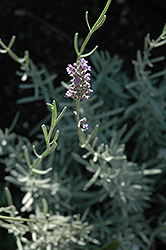It's all about ...
plants

Dwarf Blue Lavender
Lavandula angustifolia 'Nana'
Height: 12 inches
Spread: 12 inches
Sunlight:
![]()
Hardiness Zone: (annual)
Other Names: English Lavender, Common Lavender
Description:
This interesting variety is small enough to fit into a rock garden yet substantial enough to contribute to the garden as a colorful herb, perfect for edging perennial borders or herb gardens; forms a very dense mound of foliage, hardier than the species
Ornamental Features
Dwarf Blue Lavender has masses of beautiful spikes of fragrant powder blue flowers rising above the foliage from early to late summer, which are most effective when planted in groupings. The flowers are excellent for cutting. Its attractive fragrant needle-like leaves are grayish green in colour. The foliage often turns coppery-bronze in fall.
Landscape Attributes
Dwarf Blue Lavender is a dense multi-stemmed annual with a mounded form. It brings an extremely fine and delicate texture to the garden composition and should be used to full effect.
This is a relatively low maintenance plant, and can be pruned at anytime. It is a good choice for attracting butterflies to your yard, but is not particularly attractive to deer who tend to leave it alone in favor of tastier treats. It has no significant negative characteristics.
Dwarf Blue Lavender is recommended for the following landscape applications;
- Mass Planting
- Border Edging
- General Garden Use
- Container Planting
Planting & Growing
Dwarf Blue Lavender will grow to be about 10 inches tall at maturity, with a spread of 12 inches. Its foliage tends to remain low and dense right to the ground. Although it's not a true annual, this slow-growing plant can be expected to behave as an annual in our climate if left outdoors over the winter, usually needing replacement the following year. As such, gardeners should take into consideration that it will perform differently than it would in its native habitat.
This plant should only be grown in full sunlight. It prefers dry to average moisture levels with very well-drained soil, and will often die in standing water. It is considered to be drought-tolerant, and thus makes an ideal choice for a low-water garden or xeriscape application. It is not particular as to soil type, but has a definite preference for alkaline soils, and is able to handle environmental salt. It is highly tolerant of urban pollution and will even thrive in inner city environments. This is a selected variety of a species not originally from North America.
Dwarf Blue Lavender is a fine choice for the garden, but it is also a good selection for planting in outdoor pots and containers. It is often used as a 'filler' in the 'spiller-thriller-filler' container combination, providing a mass of flowers and foliage against which the thriller plants stand out. Note that when growing plants in outdoor containers and baskets, they may require more frequent waterings than they would in the yard or garden.
